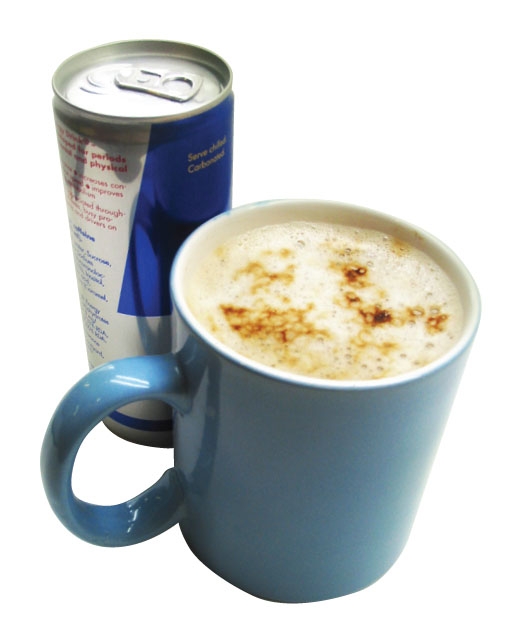
- Select a language for the TTS:
- UK English Female
- UK English Male
- US English Female
- US English Male
- Australian Female
- Australian Male
- Language selected: (auto detect) - EN
Play all audios:
With Thanksgiving smoldering in the background, Black Friday consumes all attention with its _deals! deals! deals!_ for the Christmas holiday. The left-over cooked turkey has barely frozen
over as consumers everywhere grab their car keys, rev their engines and set off in what is the beginning of the holiday rush. Like turning the knob on a radio to pump up the volume, Black
Friday guns everyone’s stress level just up a notch, with each following day swelling into stressful crescendos of shopping, parties and midnight wrapping sessions, the Christmas
hustle-bustle of 2013 begins. Though this is the kind of stress that most everyone enjoys and welcomes with a warm heart, the accelerated pace offers up an excuse to crank up the caffeine.
Yet it isn’t what the body really needs to power through in a healthful manner such as yoga and enough sleep. But who has the time during the holidays? And in a country where one study
indicates 90 percent of Americans consume caffeine in one form or another, how much do people really know about caffeine? Caffeine, a natural occurring chemical stimulant called
trimethylxanthine, is a drug, albeit officially a legal one found in many things we eat and drink. It stimulates the brain in the same form as some other not-so-nice drugs such as cocaine
and heroin and is addicting. Caffeine in its pure form is a white crystalline powder with a bitter taste. How does this affect the body? It starts in the brain. Adenonsine is a chemical that
promotes sleep by sliding into its special receptor in the cell so as to slow the cell’s metabolism down, thus causing drowsiness. Caffeine can bind to these receptors as well and when it
does, the cell doesn’t know the difference. But instead of slowing the cell down, caffeine speeds it up. This increase in neuron firing signals the pituitary gland an emergency is happening,
thereby triggering the adrenals to release adrenaline or what is termed the “fight or flight” syndrome. And in turn the body’s pupils dilate, the airway passages open up, the heart beats
faster, blood pressure rises, blood flow to the stomach slows, the liver releases sugar into the bloodstream for extra energy, and muscles tighten for action. Dopamine is a neurotransmitter
that activities pleasure centers in the body. Levels remain high when caffeine is ingested and researchers believe this is what gives the addictive value to caffeine. The long term problem
of caffeine is how it affects sleep. Adenosine is needed for sleep, especially a deep sleep which is essential for our bodies. And even though the body is able to fall asleep after caffeine
has been consumed, hitting that precious deep sleep cycle might not happen, making for another tired morning and the cycle repeated with more caffeine. An interesting fact to note is the
half-life of caffeine in the body is up to six hours, usually leaving the body by 12 hours. A cup of coffee contains 100-200 mg of caffeine, with green tea containing 10-60 mg, and chocolate
13 mg. Keeping the body in a “state of emergency” all the time with the adrenals constantly pumping its hormones is not healthy for the body and therefore all day caffeine drinkers should
beware. But for most of us, our caffeine fix comes in the form of coffee, so two cups a day is fine (i.e., a 16 oz cup). As for the elbow dodging, long lines and slow checkers encountered on
these shopping days….stay calm and caffeine on. _Gina can be reached at [email protected]._






